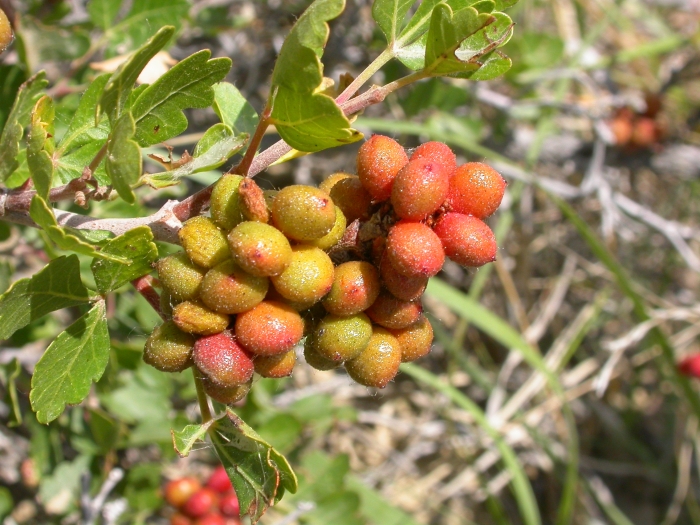Skunkbush Sumac
(Rhus trilobata)
Skunkbush Sumac (Rhus trilobata)
/
/

Matt Lavin from Bozeman, Montana, USA
CC BY-SA 2.0
































































Estimated Native Range
Summary
Skunkbush sumac is valued for its drought tolerance and wildlife benefits, as it provides food and cover for various animal species. The small catkins produce white or light yellow flowers that are animal-pollinated, followed by hairy, sticky red berries with a lime-like aroma and sour taste, rich in tannic and gallic acids. These berries are edible and can be used to make a lemonade-like beverage. Skunkbush sumac is often used for natural landscaping, erosion control, and as a component in restoration projects due to its ability to form thickets by vegetative reproduction. It requires full sun to part shade, low water, and well-drained soils. While generally disease-resistant, it can occasionally suffer from leaf spots or rust.CC BY-SA 4.0
Plant Description
- Plant Type: Shrub
- Height: 2-5 feet
- Width: 3-8 feet
- Growth Rate: Moderate
- Flower Color: N/A
- Flowering Season: Summer
- Leaf Retention: Deciduous
Growth Requirements
- Sun: Full Sun, Part Shade
- Water: Low
- Drainage: Fast, Medium
Common Uses
Bank Stabilization, Bee Garden, Bird Garden, Butterfly Garden, Deer Resistant, Drought Tolerant, Edible*Disclaimer: Easyscape's listed plant edibility is for informational use. Always verify the safety and proper identification of any plant before consumption., Erosion Control, Fragrant, Groundcover, Hummingbird Garden, Low Maintenance, Rabbit Resistant, Street Planting
Natural Habitat
Chaparral, desert scrub, pinyon-juniper woodlands, and montane forests
Other Names
Common Names: Sourberry, Skunkbush, Squawbush, Three-Leaf Sumac
Scientific Names: , Rhus trilobata, Rhus aromatica var. trilobata, Rhus trilobata var. trilobata, Rhus aromatica subsp. trilobata, Rhus aromatica var. flabelliformis, Rhus oxyacanthoides, Schmaltzia trilobata, Schmaltzia cognata, Schmaltzia leiocarpa
GBIF Accepted Name: Rhus trilobata Nutt.